Home iPhonia my iPhone ,,,,, The fast charging of the iPhone has been under discussion for some time. There are dozens of articles on the internet that try to provide solutions, but aside from a few simple tricks that are not to be scorned, the only real possibility, until a few days ago, was one: put aside the charger that we find in the package and adopt one capable of supplying 2.4A.
At this intensity our device would have reached 100% energy in a significantly shorter time than possible with the obsolete standard charger (which supplies only 1A) found in the iPhone box. In particular, the 2,900 mAh of an iPhone 7 Plus were restored in just over two hours instead of three hours, a nice gain certainly but an unsatisfactory result compared to what happened with other devices in the Android world that use components compatible with Quick Qualcomm's Charge.
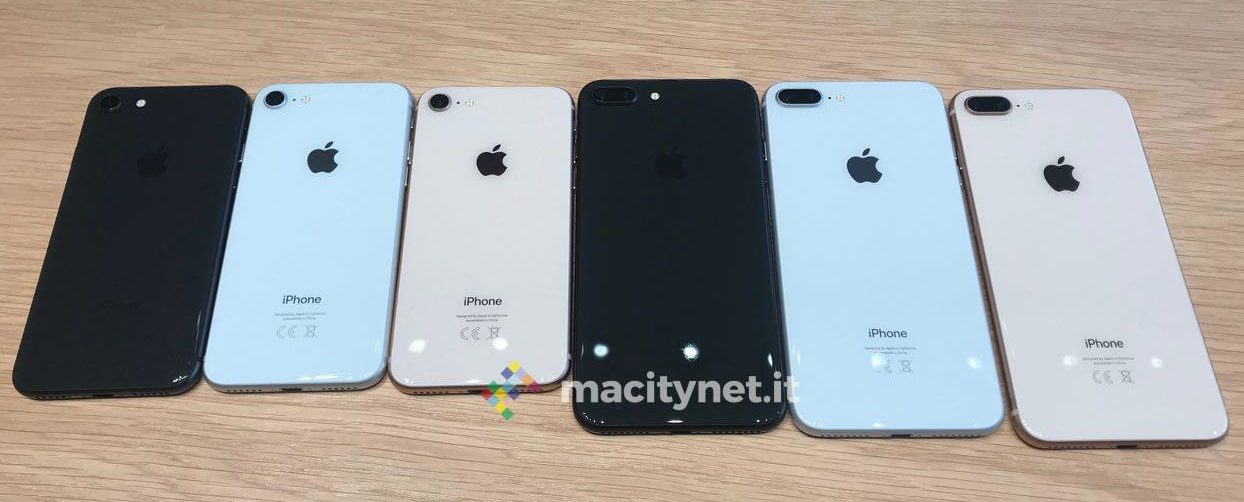 These devices, the norm in the Android world, are capable not only of shortening the charging times in absolute terms, but also of drastically reducing, compared to the iPhone, the time it takes to go from zero to 50/60% battery, so have a device ready for almost a day's work, perhaps with a quick charge in the morning before going out.
These devices, the norm in the Android world, are capable not only of shortening the charging times in absolute terms, but also of drastically reducing, compared to the iPhone, the time it takes to go from zero to 50/60% battery, so have a device ready for almost a day's work, perhaps with a quick charge in the morning before going out.
With iPhone 8 and in the future with iPhone X all this changes because Apple has introduced fast charging in its phones as well. Qualcomm's Quick Charge technology is not used, but Type-C's ability to increase the maximum deliverable power on this type of port. More power means faster charging, so shorter times to charge iPhone. Apple talks about 50% of the battery restored in half an hour, a result that would be very interesting. We then tried to test this claim and then try to understand where the real benefits of fast charging lie.
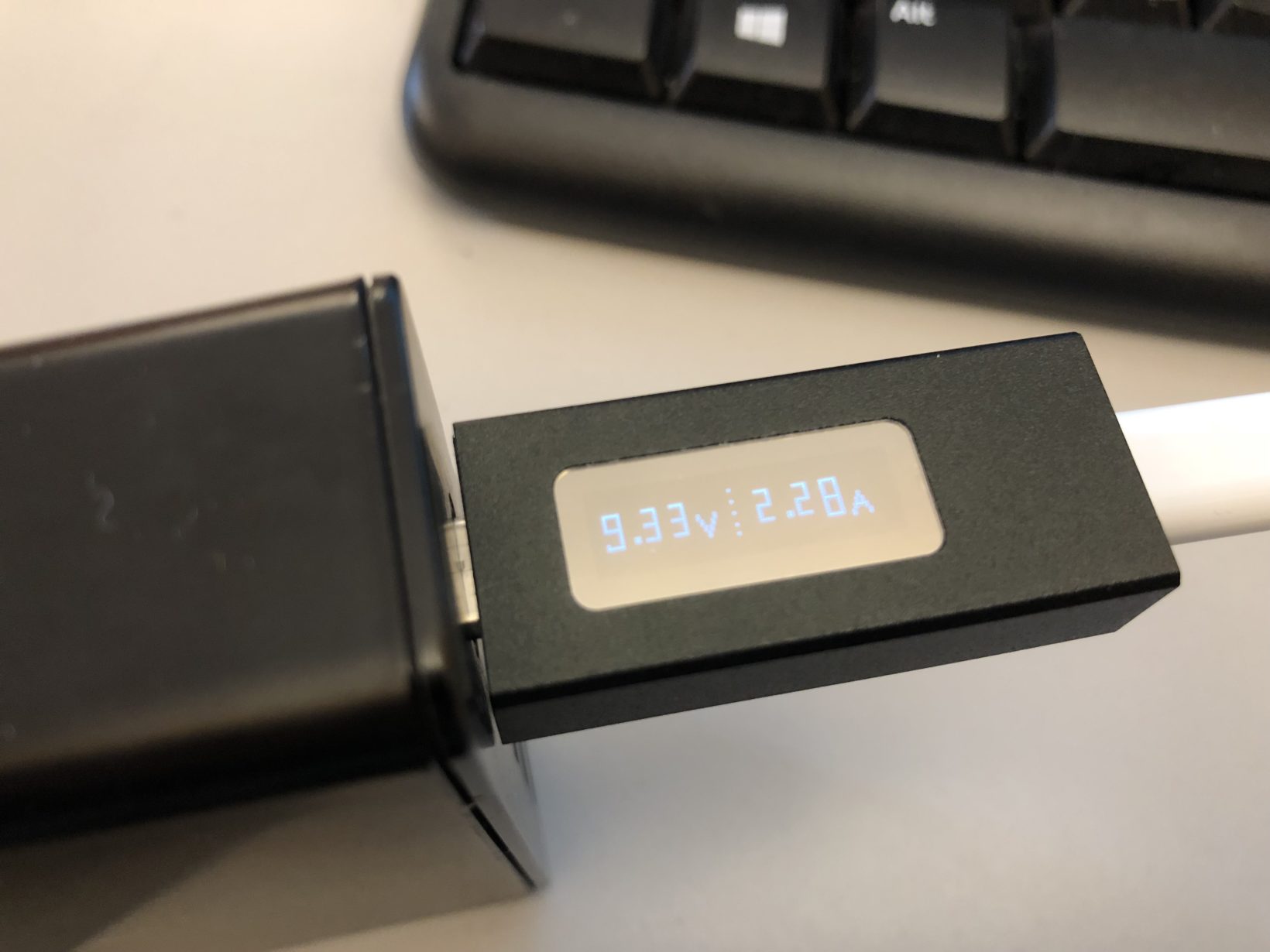
iPhone Quick Charge, the proof
In our tests, an iPhone 8 Plus (2691 mAh battery) in ten minutes jumps from 1% to 21% and recharges from 1% to 54% in half an hour, as Apple says, reaching 73% in just 40 minutes. Then the speed slows down, as with all chargers and with all batteries. In the next half hour, then 1 hour and ten minutes from the start of charging, iPhone 8 Plus is almost fully charged: it reaches 91%. In any case, this means that in our experiment to try to understand how fast charging of the iPhone works, in an hour and ten we have gained 90% of the autonomy. And if we want to reach 100% (which is not always advisable) it will take another 35 minutes. It took us 1 hour and 45 minutes to fully charge.
Compared to a 12W charger we got a not inconsiderable result, but not comparable, at least if you are looking for an inspiration. In 10 minutes we reached 12%, in half an hour 35%. While using a Power Delivery power supply with the iPhone 8 Plus you get 73% of the battery in 40 minutes, with the 12W charger it takes an hour and 15 minutes, so in fact more than double the time. In the end, however, the difference was less tangible: it took us exactly two hours to finish the charge, just 15 minutes longer than it took with a Type-C charger.
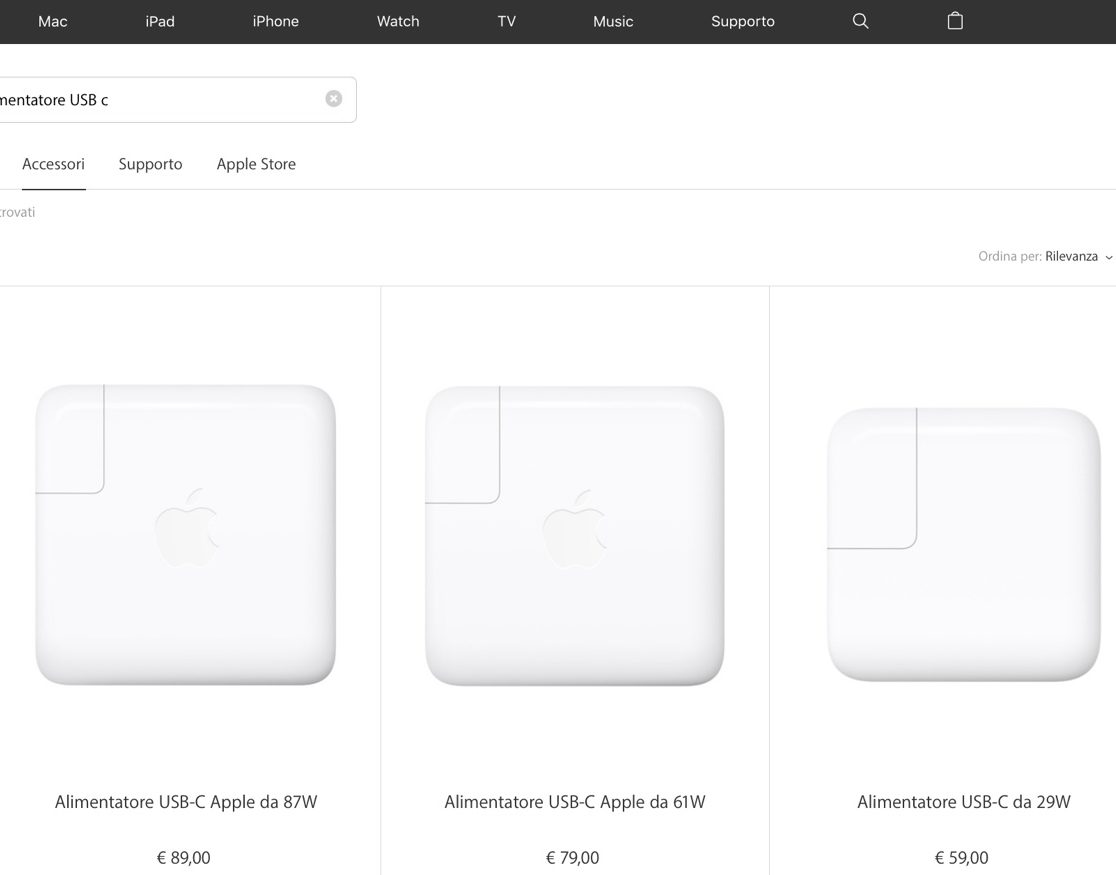 It should be noted that in the course of our test we also verified that the new iPhone charges slightly faster than the 7 Plus even using a USB type A cable. In fact, we measured an absorption of 2.2 A at 5.1V versus 2A (always at 5.1V); however, it is also noted that in the final part of the recharge a traditional 12W power supply, as mentioned above, is more efficient than a Type-C charger. This is because in the last part of the charge, iPhone 8 Plus absorbs only 5.1V at 0.8A from our charger with Power Delivery and then drops, from 95% upwards, to 0.4A. In practice it has lower performance than a normal USB Type-A charger.
It should be noted that in the course of our test we also verified that the new iPhone charges slightly faster than the 7 Plus even using a USB type A cable. In fact, we measured an absorption of 2.2 A at 5.1V versus 2A (always at 5.1V); however, it is also noted that in the final part of the recharge a traditional 12W power supply, as mentioned above, is more efficient than a Type-C charger. This is because in the last part of the charge, iPhone 8 Plus absorbs only 5.1V at 0.8A from our charger with Power Delivery and then drops, from 95% upwards, to 0.4A. In practice it has lower performance than a normal USB Type-A charger.
We then tried to do a test on the fast charging of the iPhone even with a standard 1 Ah charger, the one that is in the package. The results were barely sufficient, but nothing to do with fast charging or even with the 2.4 A charger. In thirty minutes, for example, you get to just 24% and in one hour to 43 minutes, certainly under the amount of energy sufficient for one day.
On the contrary, to have an iPhone 8 Plus that can be used for a day of use between normal and intense, using a Type-C charger, 40 minutes are enough and this represents the greatest benefit of Power Delivery support but if you are used to recharging yours phone as soon as it drops a few percentage points from around 70/80% and up, (which would be inadvisable to do, but some might have this impulse …), a Type-C power supply does not provide any tangible benefit.
If you are from the first “parish”, that of those who frequently download their iPhone and want to recharge it quickly, what do you need?
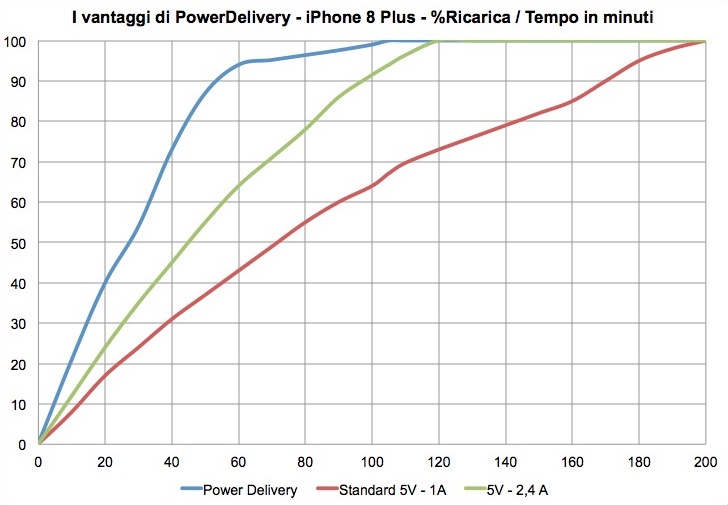
Quickly charge an iPhone, what you need
For iPhone fast charging, you obviously need a new iPhone, iPhone 8 or 8 Plus in the first place, since older phones don't support fast charging. Secondly, a Type-C cable on Lightining to be bought by Apple itself; there is a 1 meter model for 29 euros and also a 2 meter cable for 39 euros. There are currently no other Apple-certified Type-C to Lightning cables. Above all, there are no sufficiently safe ones; since we are talking about power and electricity, here you run the risk of damaging your phone so it is better not to risk it with accessories purchased from poorly accredited sellers.
Thirdly, you need a Type-C power supply compatible with Power Delivery technology. This function (which you will also find listed as PD on the packs) allows the power supply to supply up to at least 30W of power, thus quickly recharging the battery. Apple has three different Power Delivery compatible chargers, they are the ones found in the MacBook 12 ”Retina and MacBook Pro packages. They are 29W, 61W or 87W. Unless you have a latest generation MacBook Pro at home, the most recommended is the 29W one. It's small and it's also the cheapest and with 30W that's more than enough to hit the 20W maximum power that iPhone, according to our measurements, seems to be able to draw.
If you want to spend less, we recommend that you turn to the third-party power supply market. During our test we used both the power supply of the 12 ”30W MacBook and an Anker PowerPort USB-C, a very flexible product with a Type-C port and 4 USB Type-A ports, therefore useful for charging other devices as well. It is an excellent product, also due to the fact that it has a long electric cable; so we won't have to stay too close to the socket, as Apple's Type-C Lightning cable is only one meter long. The only limit of this accessory is the size, it is larger than the Apple power supply, and on the performance of the USB Type-C ports we measured only 2A maximum as current intensity, against the 2.4A of other USB power supplies (also from Anker ). 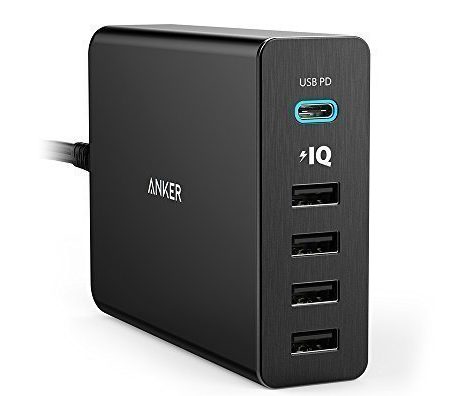
We also tested Aukey's interesting 29W Power Delivery wall charger for dimensions. It is an accessory designed to alternatively charge either a Type-C device or, using an adapter included in the package, two devices that support 5V / 2.4A charging. In this case, however, it is a power supply that goes directly into the wall socket and therefore you will have to settle for the length (1 meter) of the Apple Type-C Lightning cable.
We also ran a short test with this charger from Dodocool, similar to that from Anker but with five USB ports instead of four. Although made with less valuable materials, it is able to work perfectly for fast charging of the iPhone 8 and a MacBook Retina 12 ″.
Finally the prices. To have the fast charging of the iPhone using an Apple power supply, unless we already have one at home, you have to spend 59 euros, plus the 29 euros required for the Type-C Lightning cable. Using a third-party power supply, the cost goes from 22.99 euros for the Aukey power supply (temporarily discounted with a Cyber Layman code), to 54.99 euros for the Anker power supply. But on Amazon you can find power supplies like this, similar to that of Anker, from 29.99 € produced by Dodocool (a reliable operator of the marketplace) or this from 29.99 euros from Inatek which also includes a two-meter Type-C cable on TypeC, useful to replace what you find in the MacBook Pro or 12 “Retina package.
,,





